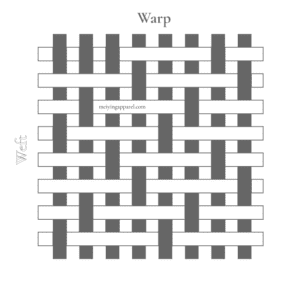Understanding the Satin Weave
Satin, distinguished by its glossy and smooth surface, owes its distinctive texture to the unique satin weave. Unlike other textile weaves, satin has a higher ratio of warp (lengthwise) threads floating over weft (widthwise) threads, resulting in a lustrous finish. This weave allows for a greater number of warp threads on the fabric’s surface, creating a smooth and reflective appearance.

The satin weave is characterized by long, floating threads that catch and reflect light, producing a luxurious sheen. This not only enhances the visual appeal of the fabric but also contributes to its soft and supple drape. The elongated floats also make satin more prone to snagging, so careful handling during the sewing process is essential to preserve the fabric’s integrity.
The Satin Spectrum
Satin fabrics are available in various compositions, including silk, polyester, acetate, and nylon. Each type of satin brings its own set of characteristics to the table, influencing the overall look and feel of the garment.
1. Silk Satin
Known for its unparalleled elegance, silk satin is a premium choice for special occasion garments. Derived from the silk cocoon, it boasts a natural sheen and a luxurious feel against the skin. Silk satin drapes beautifully, making it an excellent option for flowing gowns, bridal wear, and evening dresses. However, it comes at a higher price point, making it a choice for those who prioritize certain aspects of the fabric. It could be the drape and flow of their garment, or the breathability.
2. Polyester Satin
In contrast, polyester satin is a more affordable alternative that mimics the sheen of silk. It is a durable and versatile option, resistant to wrinkles and easy to care for. Polyester satin is an excellent choice for structured garments, including jackets, corsets, and A-line skirts, where a stiffer drape may be desired.
3. Acetate and Nylon Satin
Acetate and nylon satins strike a balance between silk and polyester. They offer a more budget-friendly option while maintaining a level of sheen and drape. These satins are often chosen for mid-range formal wear, cocktail dresses, and bridesmaid gowns. However, this satin is often used for things like costumes. This is why many garments made from it can get that “costume” look.
Choosing the Right Satin for Your Occasion:
When selecting satin for your special occasion garment, consider the following factors:
1. Drape and Flow:
If your design calls for a flowing and ethereal look, silk satin is unrivaled. Its natural drape adds an enchanting quality to gowns and dresses, making it ideal for weddings and evening events. However, if your garment requires structure or a more voluminous silhouette, polyester satin may be a more suitable choice.
2. Budget Considerations:
Silk satin, with its opulence, comes at a higher cost. Evaluate your budget and weigh the benefits of silk against the more economical options like polyester, acetate, or nylon satin. While silk is a luxurious investment, the synthetic counterparts offer a more cost-effective solution without compromising on aesthetics.
3. Application and Style:
Consider the style of your garment and its intended use. Silk satin’s elegance makes it a top choice for bridal wear, while polyester satin may be better suited for cocktail dresses or semi-formal attire. Understanding the specific requirements of your design will guide you towards the satin that complements your vision. However, when in doubt feel free to ask your designer for help.
Satin fabric is a timeless choice for special occasion garments. I recommend considering the satin weave and the specific characteristics of silk, polyester, acetate, or nylon satins when making your selection. Each variant brings its own unique qualities to the table, allowing you to tailor your choice to the demands of your design, budget, and overall aesthetic. With the right satin in hand, your garment will undoubtedly exude the grace and sophistication that only satin can provide.
Until Next Time!





